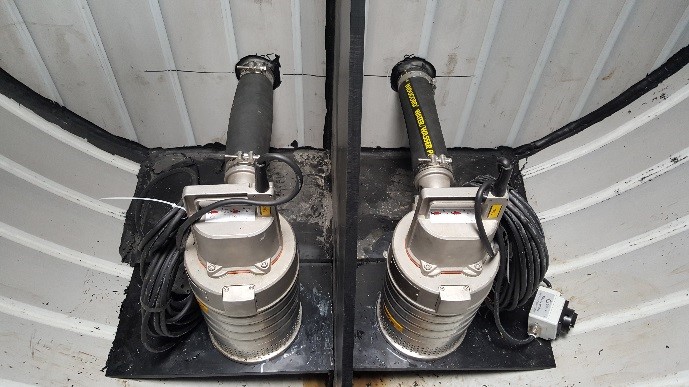Sprinkling and irrigation systems
Systems for the sprinkling or trickling of polluted rainwater in the JGS area are used to distribute polluted rainwater over large areas on vegetated otherwise unused areas. The aim is to treat this biologically low-polluted wastewater by infiltration through the living soil zone before it is insured into the groundwater. As a rule, the rainfall or trickling area must correspond to the footprint of, for example, the driving silo facilities. The system must comply with the requirements of the German Water Resources Act (WHG) § 62 and, in agricultural areas, must be designed in accordance with DWA- A 792 (TRwS 792).
For intermediate storage buffering and dosing of water quantities, tanks are needed, which must be equipped with suitable pumps.
Sabug offers a complete system for raining or pumping the so-called “contaminated rainwater” or seepage juice, including calculation for tanks, settling pit and pump system.
 The basis of the calculation is the rainfall donation, which must be determined according to DWA 117 in accordance with “KOSTRA” for the construction site of the system. Combined with the connected area, this results in a rainfall volume that must be “buffered” by the seepage tank until the pump has gradually pumped the contaminated rainwater onto the rainfall area or into another storage tank. As a rule, the 1-year rainfall event is used as a basis.
The basis of the calculation is the rainfall donation, which must be determined according to DWA 117 in accordance with “KOSTRA” for the construction site of the system. Combined with the connected area, this results in a rainfall volume that must be “buffered” by the seepage tank until the pump has gradually pumped the contaminated rainwater onto the rainfall area or into another storage tank. As a rule, the 1-year rainfall event is used as a basis.
Here, the larger the pump, the smaller the reservoir can be designed. However, larger pump have higher power consumption and, of course, are much more expensive. This can have an impact on replacement investments in particular. Because the service life of large and small pumps is the same.
The design of the plant is free of charge and includes cost optimization with regard to tank size and pump capacity. This ensures that the tank is not undersized.
To protect the pump and the sprinkler system itself, we recommend equipping the tanks with a sedimentation unit that separates the coarse material downwards and upwards.


